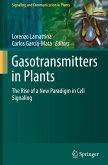This book provides an overviewof the intricacies of plant communication via volatile chemicals. Plantsproduce an extraordinarily vast array of chemicals, which provide communitymembers with detailed information about the producer's identity, physiology andphenology. Volatile organic chemicals, either as individual compounds or complexchemical blends, are a communication medium operating between plants and anyorganism able to detect the compounds and respond. The ecological andevolutionary origins of particular interactions between plants and the greatercommunity have been, and will continue to be, strenuously debated. However, itis clear that chemicals, and particularly volatile chemicals, constitute amedium akin to a linguistic tool. As well as possessing a rich chemicalvocabulary, plants are known to detect and respond to chemical cues. These cues can originate from neighbouring plants, or other associatedcommunity members. This book beginswith chapters on the complexity of chemicalmessages, provides a broad perspective on a range of ecological interactionsmediated by volatile chemicals, and extends to cutting edge developments on thedetection of chemicals by plants.
Bitte wählen Sie Ihr Anliegen aus.
Rechnungen
Retourenschein anfordern
Bestellstatus
Storno








